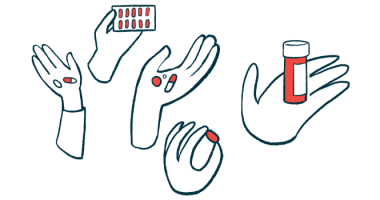In MD Study, Cancer Drug Corrects Toxic Process in Muscle Contractions
by |

Researchers have shown for the first time that a cancer-treating drug is able to neutralize the toxic RNA responsible for prolonged muscle contractions and other symptoms in myotonic dystrophy type 1. The study, titled “Actinomycin D Specifically Reduces Expanded CUG Repeat RNA in Myotonic Dystrophy Models,” was published in the journal Cell Reports.
“This finding opens a new avenue for a therapeutic strategy for this disease,” Andrew Berglund, PhD, a professor of biochemistry and molecular biology in the University of Florida College of Medicine, said in a news release. “This is the first evidence that specifically inhibiting transcription can be effective in knocking down the toxic material that causes the disease.”
Myotonic dystrophy (DM), a part of a group of inherited muscular dystrophies, is the most common form of adult-onset muscular dystrophy, affecting at least 1 in every 8,000 people worldwide. Individuals with DM often have prolonged muscle contractions (myotonia) and are not able to relax certain muscles after use, making common actions like releasing a grip on a doorknob or handle difficult.
DM symptoms stem from repeated nucleotides, known as CTG expansions, in the RNA of muscle tissue cells that can build up over time. Individuals with DM type 1 carry large CTG expansions that are toxic when transcribed from DNA. The CTG expansions disrupt the RNA binding proteins that cause splicing, the “editing” needed for RNA to generate the proteins required for muscles to properly function. “It’s clear that the mis-splicing has a significant role in causing the disease,” Dr. Berglund said.
Researchers hypothesized that reducing or eliminating transcription of CTG repeats was a possible treatment approach. As such, the team chose actinomycin D (ActD), a potent antibiotic currently used to treat some cancers, and that acts as a transcription inhibitor binding GC-rich DNA with high affinity. They tested ActD in cells and in a mouse model of MD type 1, and found that small actinomycin D concentrations resulted in an almost complete correction of mis-splicing.
The team then tested whether the drug would inhibit the production of normal RNAs in cells, and found that it changed less than 5% of normal RNA sequences. “There was a significant level of specificity for the toxic RNA,” said Dr. Berglund, a member of the UF Center for NeuroGenetics. “Actinomycin D can reduce the toxic RNA, and also inhibit it from forming.”
While ActD shows potential, Dr. Berglund noted that the drug might not be the one ultimately used in clinical trials, although the approach taken by the study needs to be considered.
The next research steps involve screening for other drugs with identical mechanisms of action that might be more effective, investigating if modifications to actinomycin D increase its effectiveness, and whether the antibiotic might be a treatment for other inherited muscular dystrophies.







